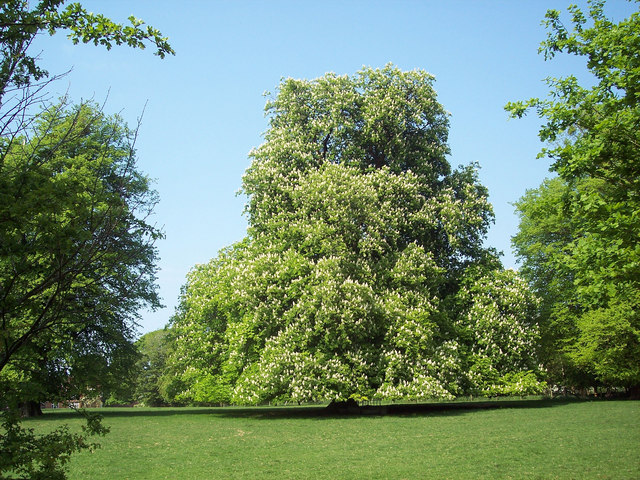The first set of our weekly Wednesday posts by final-year undergraduate students as part of their Research Comprehension module. Students write blogs inspired by guest lecturers in our Evolutionary Biology and Ecology seminar series in the School of Natural Sciences.
This week; views from Sam Preston and Emma Dunne on Britt Koskella’s seminar, Bacteria-phage interactions within their long-lived hosts
Evolution Gone Viral
Forget Darwin’s finches and forget the cichlids of Lake Malawi. if you want to see natural selection and evolution in action you’re going to need to think a lot smaller, because evolutionary biology’s gone viral.
One of the problems with adaptive evolution is that it happens on a scale we can’t appreciate. Generations of human lives can come and go and natural selection’s hardly gotten started. For the most part we’re stuck observing current diversity – the results of past natural selection – and interpreting it as best we can to get an idea of the evolutionary processes that shaped the organisms we see today. But that’s not the case with phages.
Phages – short for bacteriophages – are viruses that infect bacterial cells. They can produce thousands, even millions of copies of themselves in a matter of minutes. Each bacterial cell lysed by a phage represents a new generation of virus particles produced in less time than it takes to make a cup of tea. Every new generation is an opportunity for natural selection to go to work, and evolutionary change that might take thousands of years with larger organisms occurs in a matter of days with phages. This makes them almost perfect organisms for evolutionary study, an idea that is by no means novel; phage evolution has been studied intensively by biologists attempting to account for the origins of these ubiquitous organisms and the mechanisms of their gene transfer.
Britt Koskella and a handful of other researchers, however, are taking the study of phage evolution to new places. It is already known that the rate at which parasites adapt to their hosts has an impact on the host community structure, and there’s little that can adapt as quickly as a phage. Koskella’s research aims to determine how phages, by coevolving with their bacterial hosts, can influence the community structure of higher organisms.
Bleeding canker disease is a problem for horse chestnut trees (Aesculus hippocastanum) in the UK. It’s caused by the bacterium Pseudomonas syringae, which is itself parasitized by phages found in and on the leaves of A. hippocastanum. This is the model Koskella uses to explore phage adaptation to overcome bacterial resistance. In an elegant experiment, she showed that phages become locally adapted to P. syringae in the same tree (i.e. phages of a given tree are more infectious to P. syringae from the same tree than another).
In another experiment Koskella showed that this adaptation is met with counter-adaptation from the bacteria. By freezing phage/bacterium samples taken at various times in the year, she was able to test how resistant bacteria are to phages from the same time period, from earlier periods, and later ones. She discovered that bacteria from either the same or slightly earlier time periods relative to the phage were most susceptible to infection, whereas bacteria from later time periods were less susceptible. Interestingly, bacteria from much earlier time periods relative to the phage were also less susceptible to infection than contemporary bacteria. This result is particularly interesting, as it undermines the prevailing “evolutionary arms race” hypothesis of competition-based coevolution, instead suggesting that adaptations, when acquired, incur costs such that when they are no longer useful (i.e. when the phage/bacterium has adapted to cope with them) they are selected against and lost from the population.
The decision to investigate these evolutionary processes using P. syringae is an important one. By illustrating how phages affect a serious, disease-causing bacterium Koskella highlights the potential for phage adaptation to have a dramatic effect on tree communities. And if phages play a role in determining the structure of communities of primary producers, then one might expect knock on effects on the rest of the food web.
I think it’s fair to say that Koskella’s field of research is still in its infancy, but the premise is exciting nonetheless. For myself, there are a lot of unanswered questions that future research might address. To what extent do phages actually benefit the plants they’re in? Is there a cost to trees for harbouring phages? Can plants and phages coevolve, perhaps with plants encouraging phage residence to act as a symbiotic immune system?
Phages are already beginning to see use in biocontrol in American agriculture, but our knowledge of their function in the environment is only rudimentary. There is a great need for more research on their role in shaping the evolution of communities. If our irresponsible use of insecticides in the 20th century has taught us anything, we want to know everything we can about phage interactions before we cause irreparable harm.
Author: Sam Preston
————————————————————————————
Superbugs’ Kryptonite
Antibiotics have long been hailed as one of the greatest scientific achievements of the twentieth century. These little miracles were once doled out in their multitudes to do battle with our ear infections, kidney infections, throat infections, sexually transmitted infections and all-colours-of-nasty infections. But has the situation turned full circle, are we reverting back to a world “pre-antibiotics”?
Superbugs and their vigorous resistance to antibiotics are presently charging through the media. Our abuse of antibiotics has rendered them useless against such a massive force as a rapidly evolving bacterial infection. Don’t we all know at least one person with a stash of AugmentinTM in the back of their medicine cupboards just in case they catch a cold? One can only cringe while pondering on how they managed to build such a stash. Using antibiotics as a stronger version of over the counter medicines is a worryingly fashionable form of personal healthcare. It has led to many strains of bacteria becoming completely resistant to their former attackers.
But don’t hold up your white flag in surrender just yet. Bacteriophages are marching into the mainstream as the new superheroes. As the Greek origin of their name suggests, these viruses “devour” bacteria and then replicate within them. Described as “viruses that cure” by the BBC in an informative documentary on their history, bacteriophages have been used as an alternative to antibiotics for nearly a century. They once had widespread use, even being used to treat the Red Army in the 1920s. But, they were soon overtaken by antibiotics which were cheaper to make, and easier to prescribe, use and store. The first publications on Phage Therapy (using bacteriophages as treatment for bacterial infections), were mainly written in Russian or Georgian, making them largely inaccessible to the wider scientific community – a community dominated by English speakers still to this day. Phage Therapy has only been formally approved as a treatment for humans in Russia and Georgia, although phages for killing bacteria responsible for food poisoning, such as Listeria, are now in use in the West. Nevertheless, phage treatment offers a compelling solution to superbugs.
Just like bacteria can evolve resistance; bacteriophages can evolve to overcome this resistance. Britt Koskella from the University of Exeter is studying the apparent co-evolutionary arms-race between phages and their bacterial hosts. The results of her 2011 paper on how bacteria-phage interactions shape host populations have important implications for therapeutic phage epidemiology. With phages playing the game bacteria really don’t have a chance. Once the bacteria move the goalposts, the bacteriophages have the ability to change tactics and score. This attribute is making Phage Therapy an attractive alternative to antibiotics.
The list of advantages of phages over antibiotics does not end with their cunning ability to co-evolve with their bacterial hosts. Due to their specificity, they do not affect the useful bacteria lurking in your body and cause malicious side effects. Antibiotics are infamous for causing rashes, headaches, nausea, and diarrhoea – who wouldn’t prefer these symptoms to be eliminated from their recovery? Phages also occur naturally. We ingest numerous bacteria-eaters every day; they do not cause us any harm as they are passing through. They can even be genetically modified to reinforce their fighting power.
Study into the potential of bacteriophages to treat bacterial infections largely ceased when antibiotics emerged. Now that we seem to be reverting to a world “pre-antibiotics” there seems to be space for a revival in these studies. Phages have not-so-recently been used to combat MRSA, a superbug that increasingly plagues hospitals. Research into this is being carried out in Warsaw, a far stretch from the claimed centre of modern medicine. Highlighting the problems associated with the abuse of antibiotics seems to be falling on deaf ears, especially since the stashes of AugmentinTM are only getting larger. Will bacteriophages be allowed to step up and be the kryptonite that defeats the superbugs?
Author: Emma Dunne
Image Source: Wikicommons


